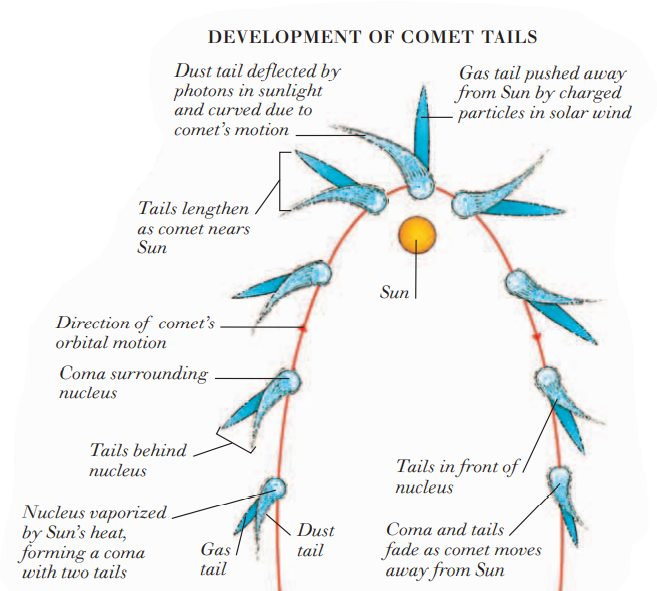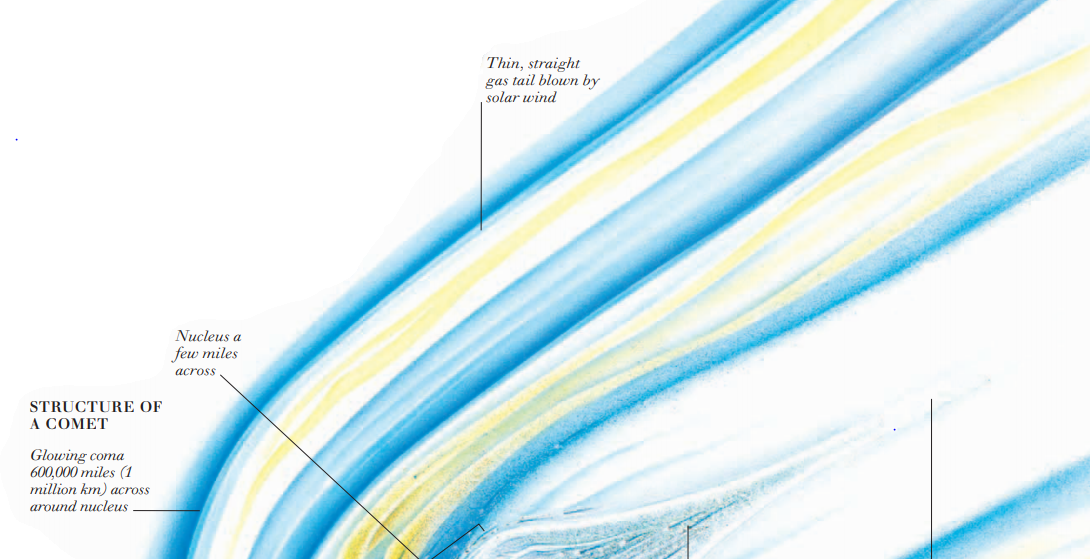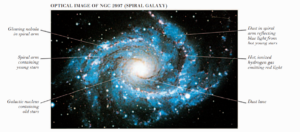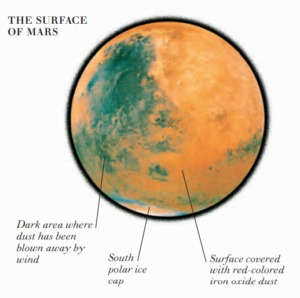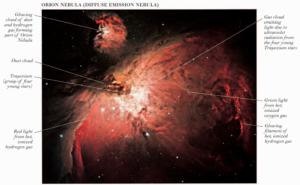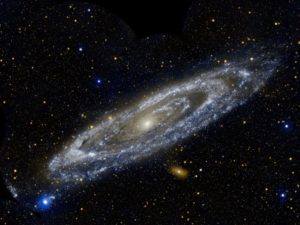ASTEROIDS, COMETS, AND METEOROIDS
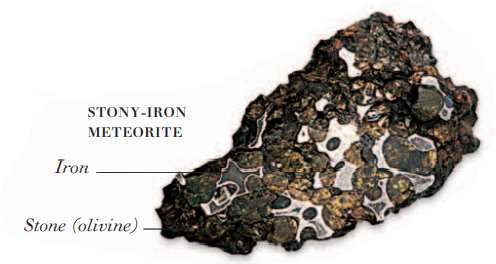
ASTEROIDS, COMETS, AND METEOROIDS are all debris remaining from the nebula from which the solar system formed 4.6 billion years ago. Asteroids are rocky bodies up to about 600 miles (1,000 km) in diameter, although most are much smaller. Most of them orbit the Sun in the asteroid belt, which lies between the orbits of Mars and Jupiter. Cometary nuclei exist in a huge cloud (called the Oort Cloud) that surrounds the planetary part of the solar system.
They are made of frozen water and dust and are a few miles in diameter. Occasionally, a comet is deflected from the Oort Cloud on to a long, elliptical path that brings it much closer to the Sun. As the comet approaches the Sun, the cometary nucleus starts to vaporize in the heat, producing both a brightly shining coma (a huge sphere of gas and dust around the nucleus), and a gas tail, and a dust tail. Meteoroids are small chunks of stone or stone and iron, which are fragments of asteroids or comets. Meteoroids range in size from tiny dust particles to objects tens of meters across. If a meteoroid enters the Earth’s atmosphere, it is heated by friction and appears as a glowing streak of light called a meteor (also known as a shooting star). Meteor showers occur when the Earth passes through the trail of dust particles left by a comet. Most meteoroids burn up in the atmosphere. The remnants of the few that are large enough to reach the Earth’s surface are termed meteorites. 


